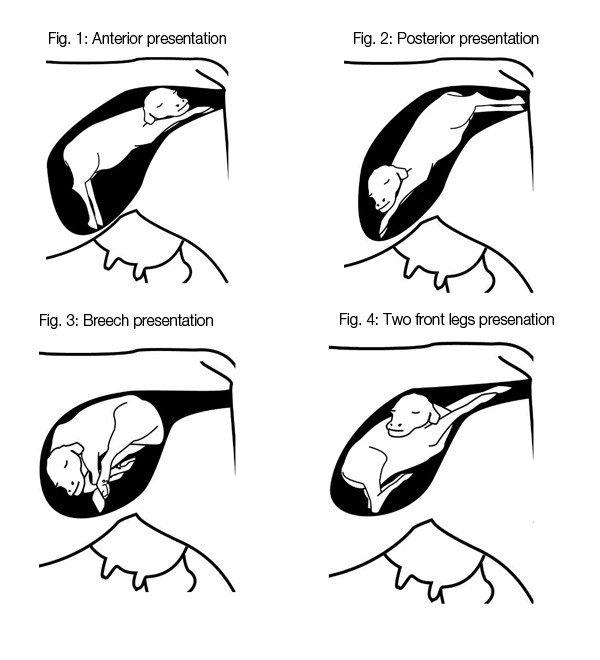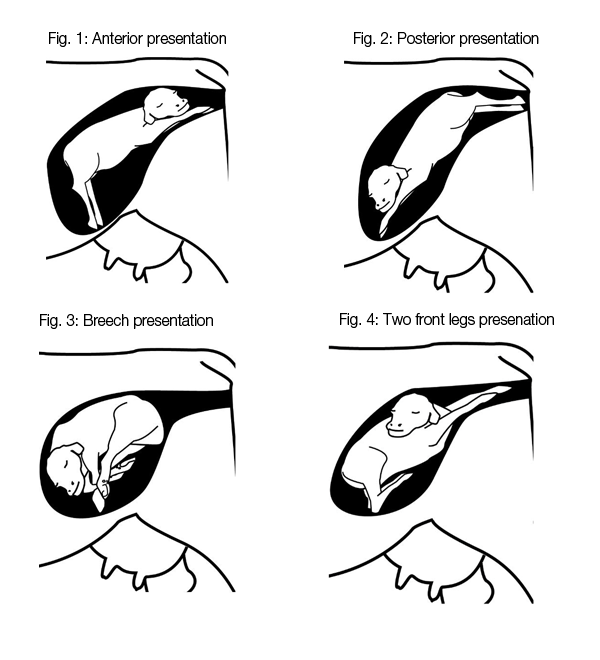When should you call the vet on a difficult calving?
Knowing when to intervene is important in managing difficult calving.

The crew at Ashland Veterinary Center is a lot busier this calving season. And that’s just fine with them.
It’s not because the veterinarians look forward to spending more time at the back end of a cow. It’s because they know they’re helping clients better manage their calving season and deliver more live, healthy calves.
Randall Spare, president of Ashland Veterinary Center in Ashland, Kan., and one of four vets at the operation, says the torrid cattle market is a big reason for their busy schedules. “We’ve assisted more people because they’ve said, ‘I don’t want to mess this up. That calf is too valuable.’ ”
But that’s true regardless of the current market. You can’t sell a calf that didn’t survive calving. To that end, Spare and his crew advise cattle producers to not be shy about calling their veterinarian when dealing with dystocia, or a difficult calving.
According to Dale Grotelueschen, a DVM and director of the University of Nebraska-Lincoln’s Great Plains Veterinary Educational Center at Clay Center, Neb., the calving process is divided into three stages.
In the first stage, the cow or heifer becomes restless. “She may get up and lie down more often and move around,” he says, and often will isolate herself from the herd.
Stage 2 begins when the water bag appears, and it includes the delivery process.
Stage 3 is expulsion of fetal membranes and involution of the uterus, he says.
Stage 1 can last 12 hours or it can be two hours, Spare says. “The challenge is not that every animal is different, but that we need to see progression,” he says. “If they’ve quit straining, then we need to intervene.”
In fact, Spare sums up his entire philosophy of when to help deliver a calf with one word: progression. “We need to see progression from the time calving starts. And that really means when they’re off by themselves.”
Subscribe now to Cow-Calf Weekly to get the latest industry research and information in your inbox every Friday!
Since calving difficulty is more often a problem in heifers, Spare suggests this timeline for progression: “When I see them off by themselves starting heavy labor, I want to see that water bag in about 30 to 45 minutes. Then in another 30 minutes, see the feet inside the water bag. Then in another 30 minutes, see the nose; and 30 minutes after that, we need to have a calf.”
Spare realizes that’s a finite timetable and cattle don’t pay attention to timetables, so it will vary. But his point is this: things need to keep moving at a reasonable clip. “I’d rather have people err on the side of caution,” he says, “so at any time when progression stops, intervene.”
Beyond watching the clock, there are some signs to look for that a cow and calf need some assistance, Grotelueschen says. “If the legs present normally and the calf’s nose is there, and the calf’s tongue or nose starts to swell, that’s an indication of delayed progress.”
What do you need to do? “We get that animal up and restrained properly in a clean area where we can safely assist her,” Spare says. By safe, he means the safety of the cow as well as the safety of the people.
That doesn’t mean a rope around her horns and snubbed up tight to a fence post. A squeeze chute will work, as will any sort of safe head catch with gates that open, in an area that’s cleanable. “It can be a dirt floor that we wipe clean and throw lime on. Or it can be concrete that we wash down between animals. But we need to have access to that animal to properly examine her.”
Dealing with a bad presentation
In the examination, you’re looking for a normal presentation, with the calf’s two front feet visible with the tips of the hooves pointing up, followed by the calf’s nose a few inches behind, Grotelueschen says. If a hoof or the head is back, or it’s a breech, the calf can be manipulated to get everything lined up. But a hoof or head out of position might be a symptom of another problem.

In a normal presentation, the calf’s front hooves are facing forward with the tips up, and the calf’s nose is an inch or two behind. A breech presentation can be a challenging dystocia presentation. But with training, producers can learn how to manipulate the fetus to make delivery easier. A calf can be delivered when in a posterior presentation, but may require assistance. If you see hooves but no head, don’t assume the calf is coming backward. The head may be back. An examination will help determine the problem. All illustrations courtesy of Oklahoma State University.
“Many times, with an abnormal presentation, particularly with a heifer, it means the birth canal isn’t big enough for the calf,” Spare says. Using a calf puller in that situation only makes things worse.
That’s a situation where having a good relationship with your vet is helpful. Food-animal vets are always willing to help their clients learn what they can do in the field, Spare says. And when your vet knows you and your abilities, it can save time and calves when assistance is needed. Spare has clients who, when they bring a dystocia case to the clinic, he knows they’ve done everything they can. “We don’t even try to pull the calf. We do a cesarean,” Spare says.
How to provide assistance
Begin by properly attaching obstetrical (OB) chains with handles and pulling manually, he says. “But it’s at this point we tell people, ‘Know your limitations and know your comfort level.’ There’s a short period of time where the survivability of both the cow and the calf is a lot better if the intervention hasn’t gone beyond their ability.”
And intervention not only helps assure a live calf, but a better cow. “We’re not only thinking about a live calf, but we’re thinking about a healthy, functioning animal that will breed back,” Spare says.
So when do you call the vet? “When you’ve gone to the limit of your ability to safely assist that calf,” Spare says.
If pulling manually doesn’t work, a calf puller often comes into play. While that’s a common tool, use it carefully, Grotelueschen says. “I think we’ve learned over many years and with experience that we need to approach this as assisting the delivery, and knowing that many calf pullers can exert far too much tension than is safe for the calf and the dam,” he cautions. “So we need to exercise caution and not get ourselves into positions where we exert too much force.”
Spare agrees. “When you start to pull a calf with a calf puller, know that you’re merely assisting uterine contractions to move [the calf along] the birth canal. And if there comes a point where progress has stopped because the calf appears to be too big in comparison with the birth canal, that’s probably the time to stop [using the calf puller] also.”
And he cautions to limit yourself to calf pullers you can control manually. That means no pickups, four-wheelers and tractors.
Birthweight genetics are better
While Spare and the other veterinarians at the clinic are assisting in more deliveries this year than in past years, they’re doing fewer cesareans. “We do 10% of the cesareans on beef cattle today than we did 25 years ago,” he says. He chalks that up to better genetics. “You can have growth genetics using top 10% birthweight bulls,” he says.
If you’re experiencing a high rate of calving difficulty, take a hard look at your bulls. With the genetic choices available today, Spare believes the accepted norm for dystocia incidence in beef heifers should be no more than 5%.
“Today, with the labor issues we have, more than ever, the last thing you need to do is be assisting a cow.” While you’ll never totally eliminate dystocia, using bulls in the top 10% of their breed for calving ease as heifer bulls will keep you between the guardrails, he says.
For clients who do that, Spare says their biggest challenge becomes helping the heifers be good mamas. And that’s a good challenge to have.
You might also like:
How Schiefelbein Farms made room on the ranch for nine sons
100 biggest seedstock producers in the U.S.
Prevention and treatment of cow prolapse
9 ranch management concepts to improve your ranch
Bale grazing lets cows feed themselves
About the Author(s)
You May Also Like



